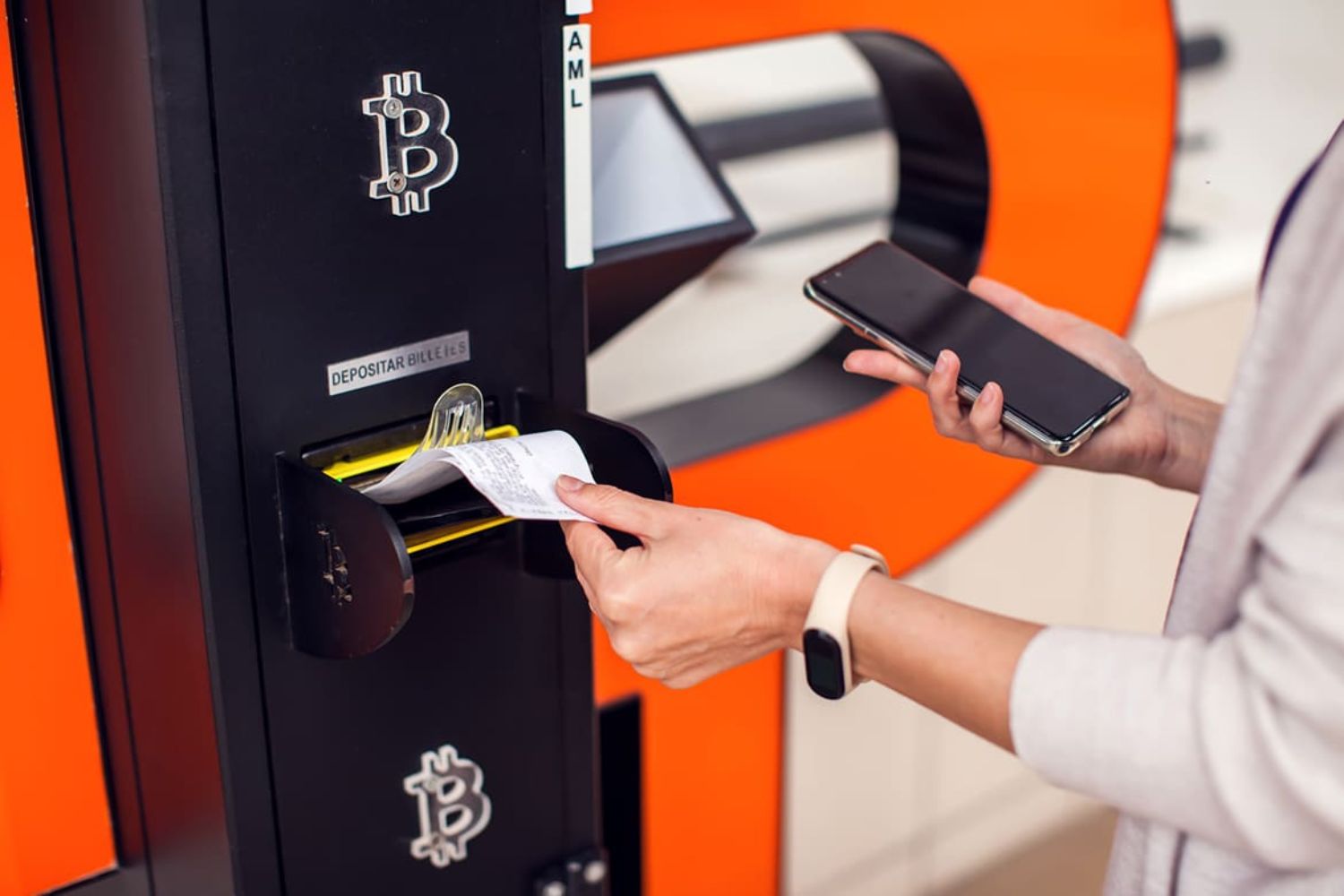Introduction
Cryptocurrency, a digital form of currency that operates on a decentralized network known as blockchain, has gained immense popularity in recent years. As more individuals and businesses embrace this new financial frontier, many are wondering how they can turn their crypto holdings into cash. Whether you’re looking to cash out small profits or convert a substantial amount of crypto into fiat currency, the process can be relatively straightforward if you follow the right steps.
In this article, we will guide you through the process of converting your cryptocurrency into cash. We will explore the basics of crypto, explain how to choose the right crypto exchange, provide steps to set up your wallet, and outline the process of selling crypto on an exchange. Additionally, we’ll cover transferring funds to your bank account, dealing with taxes and regulations, and offer tips and strategies for maximizing your profits.
Before we dive into the details, it’s important to understand the key advantages of cryptocurrency. Unlike traditional banking systems, cryptocurrencies offer fast and secure transactions, low transaction fees, and increased privacy. Furthermore, cryptocurrencies are not subject to government control or regulations, allowing users to have full control over their funds.
However, it’s essential to approach the conversion of crypto into cash with caution. The cryptocurrency market is highly volatile, and prices can fluctuate rapidly. It’s crucial to stay informed about market trends and make informed decisions to maximize your returns. Additionally, be mindful of the regulations and tax implications associated with converting crypto into cash, as laws vary between jurisdictions.
Now that we understand the basics, let’s move on to the first step: choosing the right crypto exchange.
Understanding the Basics of Crypto
Cryptocurrency is a digital or virtual form of currency that utilizes cryptography for secure transactions and operates on a decentralized network called blockchain. Unlike traditional currencies issued by central banks, cryptocurrencies are not controlled by any government or financial institution. Instead, they rely on complex mathematical algorithms to regulate transactions and create new units.
One of the key features of cryptocurrencies is their decentralized nature. Transactions made with cryptocurrencies are verified by a network of computers known as nodes, which prevents any single entity from having control over the entire system. This decentralized nature ensures transparency, security, and immutability of transactions.
The most well-known and first cryptocurrency is Bitcoin, which was introduced in 2009 by an individual or group using the pseudonym Satoshi Nakamoto. Since then, thousands of cryptocurrencies, often referred to as altcoins, have been created, each with its own unique features and use cases.
Cryptocurrencies can be obtained through various methods. One common method is mining, where powerful computers solve complex mathematical problems to validate transactions on the blockchain network. Miners are rewarded with newly minted cryptocurrency units as an incentive for their computational effort.
Another way to acquire cryptocurrencies is through exchanges. Crypto exchanges allow users to buy, sell, and trade cryptocurrencies using different fiat currencies or other cryptocurrencies. These exchanges act as intermediaries and provide a platform for users to convert their fiat money into digital assets.
It’s important to note that cryptocurrencies are highly volatile. The prices of cryptocurrencies can experience rapid fluctuations, with values soaring or plummeting within a short period. This volatility presents opportunities for traders to profit but also carries significant risk.
Understanding the basics of cryptocurrency is crucial before diving into the process of turning it into cash. It’s essential to stay informed about the different types of cryptocurrencies, their potential use cases, and the market trends that can impact their value. By staying knowledgeable and up to date, you can make informed decisions when converting your cryptocurrency into cash.
Choosing the Right Crypto Exchange
When it comes to converting your cryptocurrency into cash, choosing the right crypto exchange is crucial. A crypto exchange is a platform that facilitates the buying, selling, and trading of cryptocurrencies. With numerous exchanges available, it’s important to consider certain factors to ensure a safe and efficient conversion process.
1. Security: The security measures implemented by a crypto exchange should be your top priority. Look for exchanges that offer robust security features such as two-factor authentication (2FA), cold storage of funds, and encryption protocols. Additionally, check if the exchange has a track record of handling security breaches or hacks.
2. Reputation and trustworthiness: Research the reputation of the exchange within the crypto community. Look for user reviews, examine the exchange’s history, and see if it is regulated or licensed by any financial authorities. A trustworthy exchange should have transparent operations and a good track record.
3. Liquidity: Liquidity refers to the ability to quickly buy or sell cryptocurrencies without significantly impacting the market price. Choose an exchange with high liquidity to ensure smooth and efficient trading. Higher liquidity also means a lower chance of facing problems with withdrawals or deposits.
4. Supported cryptocurrencies: Ensure that the exchange supports the specific cryptocurrencies you wish to convert into cash. Different exchanges may have different lists of supported cryptocurrencies, so check this before proceeding.
5. User interface and features: Choose an exchange with a user-friendly interface and features that suit your trading preferences. Some exchanges offer advanced trading tools, while others focus on simplicity and ease of use. Take the time to explore different exchanges and find one that aligns with your needs.
6. Fees: Pay attention to the fee structure of the exchange. Exchanges usually charge transaction fees for buying or selling cryptocurrencies. Compare the fees across different exchanges to find a balance between cost-effectiveness and the services provided.
7. Customer support: Look for an exchange with reliable customer support that can assist you in case of any issues or queries. Prompt and helpful customer support can make a significant difference in your overall experience with the exchange.
It’s essential to thoroughly research and compare different crypto exchanges before making a decision. Consider your specific requirements, such as security, reputation, supported cryptocurrencies, and user experience. By choosing the right exchange, you can ensure a smooth and secure process when converting your cryptocurrency into cash.
Setting Up Your Wallet
Before you can convert your cryptocurrency into cash, you will need to set up a wallet to store your digital assets securely. A cryptocurrency wallet is a digital application or hardware device that allows you to securely store, send, and receive cryptocurrencies. Here are the steps to set up your wallet.
1. Choose the right type of wallet: There are different types of wallets available, including software wallets, hardware wallets, and web wallets. Each type has its own unique features and security measures. Software wallets are often free and can be downloaded onto your computer or mobile device, while hardware wallets are physical devices specifically designed to hold cryptocurrencies offline for maximum security. Web wallets are online wallets that can be accessed through a web browser. Consider your needs and preferences to select the most suitable wallet type.
2. Research wallet providers: Once you have decided on the type of wallet, research reputable wallet providers. Look for reviews and check their security features and reputation within the crypto community. It’s crucial to choose a wallet provider that prioritizes security and has a history of reliable operations.
3. Download or purchase your chosen wallet: Depending on the type of wallet you have chosen, you will need to either download the software onto your device or purchase a physical hardware wallet. Follow the instructions provided by the wallet provider to set up your wallet.
4. Create a strong password and backup your wallet: When setting up your wallet, create a strong, unique password to protect your funds. It’s also essential to back up your wallet’s private keys or recovery phrase. This backup will allow you to recover your funds if your wallet is lost, stolen, or compromised.
5. Transfer your cryptocurrency to your wallet: Once your wallet is set up, you can transfer your cryptocurrency from the exchange or any other wallet to your newly created wallet. The specific process may depend on the wallet provider, but generally, you will need to provide your wallet address and follow the instructions to complete the transfer.
6. Ensure wallet security: Take proactive steps to enhance the security of your wallet. Enable additional security features such as two-factor authentication (2FA) and ensure that your device has up-to-date antivirus software. Regularly update your wallet software to benefit from the latest security patches.
By following these steps, you will have a secure and reliable wallet to store your cryptocurrency. Remember to keep your wallet information private and follow best practices for online security to protect your funds.
Selling Crypto on the Exchange
Once you have set up your wallet and transferred your cryptocurrency, the next step in converting your cryptocurrency into cash is selling it on a crypto exchange. Selling your crypto on an exchange involves the following steps:
1. Choose the right exchange: Select an exchange that supports the cryptocurrency you wish to sell. Ensure that the exchange is reputable, secure, and offers a user-friendly interface. Consider factors such as liquidity, fees, and customer support.
2. Create an account: Sign up for an account on the exchange. This typically involves providing your personal information, including your full name, email address, and sometimes a form of identification for verification purposes.
3. Deposit your cryptocurrency: Once your account is verified, deposit the cryptocurrency you wish to sell into your exchange wallet. This is usually done by generating a unique wallet address for your specific cryptocurrency and sending the funds from your personal wallet to the exchange wallet.
4. Place a sell order: On the exchange platform, navigate to the “sell” or “trade” section and select the cryptocurrency you want to sell. Choose the amount you wish to sell and set the desired price or select the market price for an immediate sale. Review the details and confirm the sell order.
5. Monitor the trade: After placing the sell order, monitor the trade to ensure it executes correctly. In a fast-paced market, prices can fluctuate rapidly, so it’s important to stay on top of the transaction to maximize your potential returns.
6. Complete the transaction: Once the sell order is filled, you will receive the equivalent amount in your chosen fiat currency, which can typically be withdrawn to your bank account. Some exchanges may offer different withdrawal options, such as PayPal or other payment processors.
7. Withdraw your funds: If you have successfully sold your cryptocurrency, you can withdraw the funds to your bank account. Follow the withdrawal process provided by the exchange, which usually involves providing your bank account details for a direct transfer. Be aware that some exchanges may have withdrawal limits or fees, so consider this when making your decision.
It’s important to note that the process of selling crypto on an exchange can vary slightly depending on the specific exchange’s interface and features. Familiarize yourself with the platform and its functionalities to ensure a smooth and successful transaction.
Remember to implement security measures such as enabling two-factor authentication (2FA) and keeping your account credentials private. Regularly monitor your trades and be cautious of fraudulent activities or phishing attempts.
Transferring Funds to Your Bank Account
Once you have successfully sold your cryptocurrency on the exchange and received fiat currency in return, the next step is to transfer the funds to your bank account. Transferring funds from the exchange to your bank account typically involves the following steps:
1. Verify your bank account: Before you can initiate a transfer, you will need to ensure that your bank account is verified on the exchange. This may involve providing your account details or completing a verification process to confirm ownership of the account.
2. Select the withdrawal option: On the exchange platform, navigate to the withdrawal or funds section. Choose the option to transfer funds to your bank account. Some exchanges may also offer alternative withdrawal methods like PayPal or other payment processors, so select the appropriate option based on your preference and availability.
3. Enter your bank account details: Provide accurate information about your bank account, including the account holder’s name, account number, and routing number. Double-check the details to ensure they are correct, as any errors could result in delays or failed transfers.
4. Review and confirm the withdrawal: Carefully review the withdrawal details, including the amount you want to transfer and any associated fees. Confirm the withdrawal request, understanding that once initiated, it may take some time for the transfer to be processed and reflected in your bank account.
5. Wait for the transfer to complete: The duration for the funds to appear in your bank account depends on several factors, such as the exchange’s processing time and the speed of the banking system. Typically, it may take a few business days for the funds to be deposited into your bank account, although some exchanges offer expedited transfer options for an additional fee.
6. Monitor your bank account: Keep an eye on your bank account and check for the deposit from the exchange. Once the funds appear in your bank account, you can use them for any spending or saving purposes as needed.
It’s important to note that the transfer process may vary slightly depending on the exchange and bank you are using. Additionally, be aware of any withdrawal limits or fees imposed by the exchange, as well as any potential fees that your bank may charge for receiving the funds.
To ensure a smooth transfer, double-check that the bank account you are using is in good standing and able to receive transfers. If you encounter any issues or delays, contact both the exchange and your bank for assistance.
Remember to keep records of the transactions for tax purposes, as you may be required to report and pay taxes on any capital gains from the sale of cryptocurrencies.
Dealing with Taxes and Regulations
As you convert your cryptocurrency into cash, it is important to be mindful of the tax implications and regulations surrounding such transactions. The taxation of cryptocurrencies varies by jurisdiction, so it is essential to understand and comply with the tax laws in your country or region. Here are some key considerations when dealing with taxes and regulations:
1. Determine your tax obligations: Consult with a qualified tax professional or research the tax laws applicable to your location. Different jurisdictions may treat cryptocurrencies differently, classifying them as property, assets, or currencies. Understand how your cryptocurrency transactions, including the conversion of crypto into cash, may be subject to capital gains, income, or other forms of taxes.
2. Keep thorough records: Maintain accurate and detailed records of your cryptocurrency transactions. This includes records of every purchase, sale, trading activity, and transfers to and from your wallets and exchanges. Precise documentation will help in calculating your tax liabilities and proving your case if required.
3. Report your income and capital gains: If your jurisdiction considers cryptocurrency transactions taxable, ensure that you include this information in your annual tax return. Report any income derived from cryptocurrency mining, trading, or any profits made from converting crypto into cash. Failure to report taxable income can result in penalties and legal consequences.
4. Stay informed about regulatory developments: Cryptocurrency regulations are relatively new and evolving rapidly. Stay updated with the latest regulatory changes and guidance in your jurisdiction. Governments and financial authorities are increasingly focusing on the taxation and regulation of cryptocurrencies, so it’s important to stay compliant to avoid any legal issues or penalties.
5. Seek professional advice: Cryptocurrency taxation can be complex, especially if you have a significant volume of transactions or reside in a jurisdiction with specific regulations. Consider consulting with a tax professional who specializes in cryptocurrency taxation. They can assist you in understanding your tax obligations, optimizing your tax strategy, and ensuring compliance with the law.
Complying with tax laws and regulations is not only a legal requirement but also helps to foster a trustworthy and sustainable cryptocurrency ecosystem. By fulfilling your tax obligations, you contribute to the overall acceptance and legitimacy of cryptocurrencies as a viable form of financial asset.
Remember, the above points are for general information purposes only, and it is advisable to seek personalized advice from a tax professional who can provide guidance tailored to your specific situation and jurisdiction.
Tips and Strategies for Maximizing Profits
Converting your cryptocurrency into cash can be a strategic move to maximize your profits. Here are some tips and strategies to consider when navigating the process:
1. Timing the market: Cryptocurrency prices can be highly volatile, so timing your sales appropriately can lead to higher profits. Monitor market trends, news, and analysis to identify potential price movements. Consider selling when the market is experiencing an upswing or when you anticipate a peak in the cryptocurrency’s value.
2. Diversify your holdings: Instead of converting all your cryptocurrencies into cash at once, consider diversifying your portfolio. Depending on your financial goals and risk tolerance, allocate a portion of your holdings to more stable cryptocurrencies or other investment instruments. This can help mitigate potential losses and potentially maximize returns in different market conditions.
3. Set clear profit targets: Define your profit targets before entering the market. Having a predetermined exit strategy can prevent emotional decision-making and help you stay on track. Consider setting incremental profit targets to secure gains along the way, especially if the price of your cryptocurrency has experienced a substantial increase.
4. Keep an eye on fees: Transaction fees on crypto exchanges can eat into your profits. Compare the fees across different exchanges and consider utilizing exchanges that offer competitive rates. Additionally, be mindful of the fees associated with transferring funds to your bank account, as these can impact your overall returns.
5. Stay informed and conduct research: Cryptocurrency markets are evolving rapidly, with new projects and developments emerging regularly. Stay informed about the latest news and trends in the cryptocurrency space. Conduct thorough research on the cryptocurrencies you hold, including their underlying technology, partnerships, and potential future prospects. This knowledge can guide your decision-making and help you identify opportunities for profit.
6. Consider tax implications: As mentioned earlier, accounting for taxes is crucial when converting your crypto into cash. Understand the tax implications specific to your jurisdiction and factor them into your profit calculations. By staying compliant, you can avoid potential penalties and legal issues that may impact your profits.
7. Take a long-term perspective: While it can be tempting to make quick profits, consider taking a long-term approach to cryptocurrency investments. Historically, the crypto market has experienced significant volatility, and prices have gone through both booms and corrections. By holding onto your cryptocurrencies during periods of market volatility and focusing on the long-term potential of the technology and project, you may have the opportunity to maximize your profits.
Remember that investing in cryptocurrencies carries risks, and past performance is not an indicator of future results. It’s essential to conduct your own research, understand your risk tolerance, and seek professional advice when needed.
By applying these tips and strategies, you can potentially enhance your profitability and make more informed decisions when converting your cryptocurrency into cash.
Conclusion
Converting your cryptocurrency into cash can be a rewarding process if approached with the right knowledge and strategies. By understanding the basics of crypto, choosing the right exchange, setting up a secure wallet, selling on the exchange, transferring funds to your bank account, dealing with taxes and regulations, and implementing tips for maximizing profits, you can navigate the conversion process successfully.
It’s important to stay informed about market trends, monitor the volatility of cryptocurrencies, and make informed decisions based on your financial goals and risk tolerance. Keep in mind the tax implications and regulations specific to your jurisdiction to ensure compliance and avoid any potential penalties.
Additionally, remember that the cryptocurrency market is constantly evolving, and it is essential to stay updated with the latest news and technological advancements in the space. Conduct research, seek professional advice when needed, and consider taking a long-term perspective to navigate the market’s fluctuations successfully.
Converting your cryptocurrency into cash offers the opportunity to realize your investment gains, secure your profits, and make use of traditional financial systems. However, it’s important to approach the process with caution, considering the unique characteristics of cryptocurrencies and the dynamic nature of the market.
As you navigate the world of cryptocurrency conversions, always prioritize your security and stay vigilant against potential scams and fraudulent activities. By making informed decisions, staying informed, and following best practices, you can maximize your profits and thrive in the exciting realm of cryptocurrencies.

























